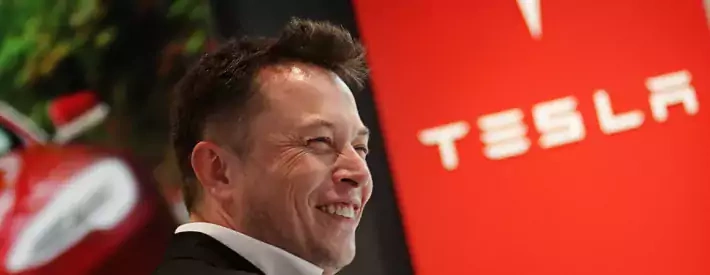Super lucrative: How Tesla is evolving to stay on top

What company springs to mind when you think cutting-edge auto tech? Same here. Tesla. At the recent FT Future of the Car Summit, Elon Musk reminisced about the first Roadster.
“There were no start-ups doing electric cars, and the big car companies had really no electric car programmes,” he said. “Unless we tried, they were not going to be created. It wasn’t from a standpoint of thinking, hey, here's a super lucrative idea.”
20 years later, Tesla is the world’s most valuable car brand, and it’s not even close. In June 2022, Statista valued it at US$75.9 billion, up from a mere 40-odd billion in 2020, and substantially more than second-placed Toyota and third-placed Mercedes-Benz put together.
From drivetrains to marketing, it has shredded the vehicle manufacturing rulebook, and continues to do so. Consider just some of the key developments over the last six months.
In March, Musk entered into a Twitter spat with US president Joe Biden, after the latter praised Ford for investing $11billion to build EVs, creating 11,000 jobs, and GM for investing $7billion, creating 4,000 jobs. He retorted: “Tesla has created over 50,000 US jobs building electric vehicles and is investing more than double GM and Ford combined.”
Research by StockApps confirmed that Tesla spends more on R&D than rival carmakers, around $3,000 per vehicle produced. While Electrek highlighted that Tesla spends nothing on advertising, relying “almost entirely on word-of-mouth”.
It wasn’t all plain sailing. A court in Germany ordered Tesla to buy back a Model 3 from a customer who likened the Full Self-Driving package to “a drunk first-time driver”. With EV no longer a USP, ADAS is the new battleground.
In May, a judge in California ruled that the driver of a Tesla operating in Autopilot must stand trial for a crash that killed two people. A Model S reportedly ran a red light and hit a Honda Civic at 74mph. It could mark the first felony prosecution against a driver using a partially automated driving system.
More negative press followed when it emerged that hundreds of Tesla owners had complained about “phantom braking”, with cars stopping suddenly for no apparent reason.
Then, in June, the US National Highway Traffic Safety Administration (NHTSA) published the first of its new monthly reports into crashes involving vehicles with ADAS. Tesla had the most, followed by Honda and Subaru.
Cue the headlines, “Tesla Autopilot and Other Driver-Assist Systems Linked to Hundreds of Crashes” in The New York Times, and “Teslas running Autopilot involved in 273 crashes reported since last year” in The Washington Post.
Importantly, the US Public Interest Research Group clarified that: “Teslas are connected to the internet and automatically report if the car was in Autopilot. Honda asks its drivers if they were using ADAS, so it relies on hard-to-verify personal accounts. Everyone else leaves it up to the police report.”
Tesla went on the offensive, quoting some eye-catching statistics: “In 2021, we recorded 0.22 crashes for every million miles driven in which drivers were using Autopilot technology. For drivers who were not using Autopilot technology, we recorded 0.77 crashes for every million miles driven. By comparison, NHTSA’s most recent data shows that in the United States there are 1.81 automobile crashes for every million miles driven.”
Its Impact Report also noted that, “In 2021, the global fleet of Tesla vehicles, energy storage and solar panels enabled its customers to avoid emitting 8.4 million metric tons of CO2e.”
That’s a whirlwind six months, and we haven’t even mentioned the Gigafactory in Texas, the Cybertruck SUV, the plans to launch a steering wheel free robotaxi by 2024, June’s new car price hikes, or the off-the-chart used values.
The fact is Tesla has revolutionised the global motor industry at lightning speed, and shows no signs of slowing.




